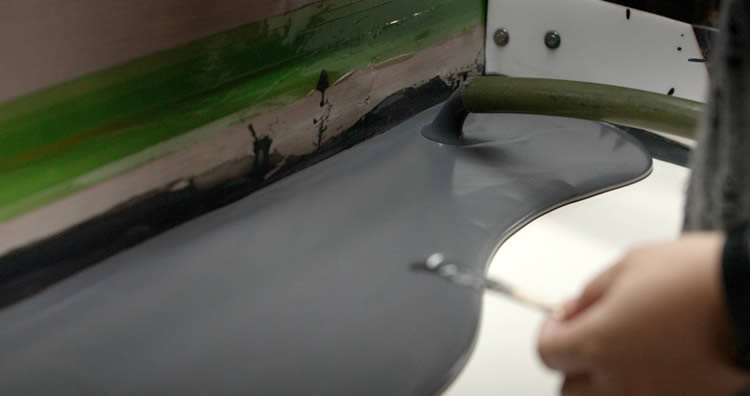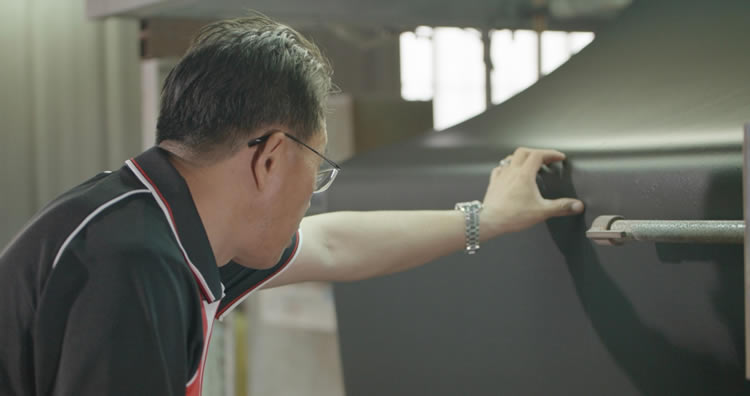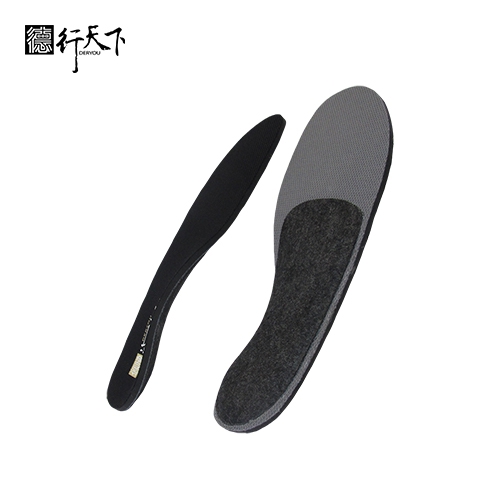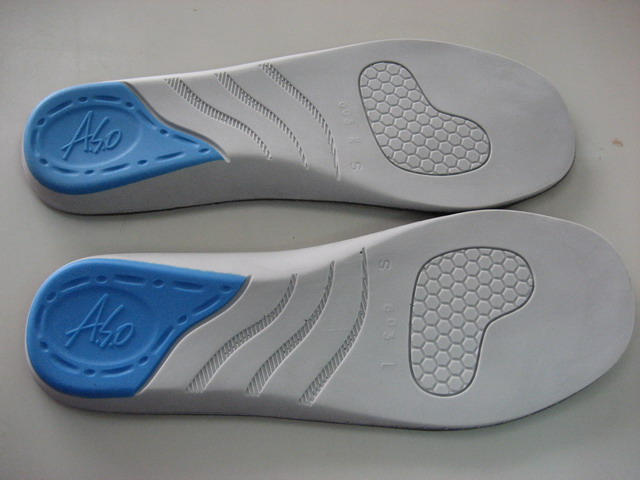Introduction – Company Background
GuangXin Industrial Co., Ltd. is a specialized manufacturer dedicated to the development and production of high-quality insoles.
With a strong foundation in material science and footwear ergonomics, we serve as a trusted partner for global brands seeking reliable insole solutions that combine comfort, functionality, and design.
With years of experience in insole production and OEM/ODM services, GuangXin has successfully supported a wide range of clients across various industries—including sportswear, health & wellness, orthopedic care, and daily footwear.
From initial prototyping to mass production, we provide comprehensive support tailored to each client’s market and application needs.
At GuangXin, we are committed to quality, innovation, and sustainable development. Every insole we produce reflects our dedication to precision craftsmanship, forward-thinking design, and ESG-driven practices.
By integrating eco-friendly materials, clean production processes, and responsible sourcing, we help our partners meet both market demand and environmental goals.


Core Strengths in Insole Manufacturing
At GuangXin Industrial, our core strength lies in our deep expertise and versatility in insole and pillow manufacturing. We specialize in working with a wide range of materials, including PU (polyurethane), natural latex, and advanced graphene composites, to develop insoles and pillows that meet diverse performance, comfort, and health-support needs.
Whether it's cushioning, support, breathability, or antibacterial function, we tailor material selection to the exact requirements of each project-whether for foot wellness or ergonomic sleep products.
We provide end-to-end manufacturing capabilities under one roof—covering every stage from material sourcing and foaming, to precision molding, lamination, cutting, sewing, and strict quality control. This full-process control not only ensures product consistency and durability, but also allows for faster lead times and better customization flexibility.
With our flexible production capacity, we accommodate both small batch custom orders and high-volume mass production with equal efficiency. Whether you're a startup launching your first insole or pillow line, or a global brand scaling up to meet market demand, GuangXin is equipped to deliver reliable OEM/ODM solutions that grow with your business.



Customization & OEM/ODM Flexibility
GuangXin offers exceptional flexibility in customization and OEM/ODM services, empowering our partners to create insole products that truly align with their brand identity and target market. We develop insoles tailored to specific foot shapes, end-user needs, and regional market preferences, ensuring optimal fit and functionality.
Our team supports comprehensive branding solutions, including logo printing, custom packaging, and product integration support for marketing campaigns. Whether you're launching a new product line or upgrading an existing one, we help your vision come to life with attention to detail and consistent brand presentation.
With fast prototyping services and efficient lead times, GuangXin helps reduce your time-to-market and respond quickly to evolving trends or seasonal demands. From concept to final production, we offer agile support that keeps you ahead of the competition.
Quality Assurance & Certifications
Quality is at the heart of everything we do. GuangXin implements a rigorous quality control system at every stage of production—ensuring that each insole meets the highest standards of consistency, comfort, and durability.
We provide a variety of in-house and third-party testing options, including antibacterial performance, odor control, durability testing, and eco-safety verification, to meet the specific needs of our clients and markets.
Our products are fully compliant with international safety and environmental standards, such as REACH, RoHS, and other applicable export regulations. This ensures seamless entry into global markets while supporting your ESG and product safety commitments.
ESG-Oriented Sustainable Production
At GuangXin Industrial, we are committed to integrating ESG (Environmental, Social, and Governance) values into every step of our manufacturing process. We actively pursue eco-conscious practices by utilizing eco-friendly materials and adopting low-carbon production methods to reduce environmental impact.
To support circular economy goals, we offer recycled and upcycled material options, including innovative applications such as recycled glass and repurposed LCD panel glass. These materials are processed using advanced techniques to retain performance while reducing waste—contributing to a more sustainable supply chain.
We also work closely with our partners to support their ESG compliance and sustainability reporting needs, providing documentation, traceability, and material data upon request. Whether you're aiming to meet corporate sustainability targets or align with global green regulations, GuangXin is your trusted manufacturing ally in building a better, greener future.
Let’s Build Your Next Insole Success Together
Looking for a reliable insole manufacturing partner that understands customization, quality, and flexibility? GuangXin Industrial Co., Ltd. specializes in high-performance insole production, offering tailored solutions for brands across the globe. Whether you're launching a new insole collection or expanding your existing product line, we provide OEM/ODM services built around your unique design and performance goals.
From small-batch custom orders to full-scale mass production, our flexible insole manufacturing capabilities adapt to your business needs. With expertise in PU, latex, and graphene insole materials, we turn ideas into functional, comfortable, and market-ready insoles that deliver value.
Contact us today to discuss your next insole project. Let GuangXin help you create custom insoles that stand out, perform better, and reflect your brand’s commitment to comfort, quality, and sustainability.
🔗 Learn more or get in touch:
🌐 Website: https://www.deryou-tw.com/
📧 Email: shela.a9119@msa.hinet.net
📘 Facebook: facebook.com/deryou.tw
📷 Instagram: instagram.com/deryou.tw
Cushion insole OEM solution Vietnam
Are you looking for a trusted and experienced manufacturing partner that can bring your comfort-focused product ideas to life? GuangXin Industrial Co., Ltd. is your ideal OEM/ODM supplier, specializing in insole production, pillow manufacturing, and advanced graphene product design.
With decades of experience in insole OEM/ODM, we provide full-service manufacturing—from PU and latex to cutting-edge graphene-infused insoles—customized to meet your performance, support, and breathability requirements. Our production process is vertically integrated, covering everything from material sourcing and foaming to molding, cutting, and strict quality control.China custom neck pillow ODM
Beyond insoles, GuangXin also offers pillow OEM/ODM services with a focus on ergonomic comfort and functional innovation. Whether you need memory foam, latex, or smart material integration for neck and sleep support, we deliver tailor-made solutions that reflect your brand’s values.
We are especially proud to lead the way in ESG-driven insole development. Through the use of recycled materials—such as repurposed LCD glass—and low-carbon production processes, we help our partners meet sustainability goals without compromising product quality. Our ESG insole solutions are designed not only for comfort but also for compliance with global environmental standards.Memory foam pillow OEM factory Vietnam
At GuangXin, we don’t just manufacture products—we create long-term value for your brand. Whether you're developing your first product line or scaling up globally, our flexible production capabilities and collaborative approach will help you go further, faster.One-stop OEM/ODM solution provider China
📩 Contact us today to learn how our insole OEM, pillow ODM, and graphene product design services can elevate your product offering—while aligning with the sustainability expectations of modern consumers.Indonesia pillow ODM development service
Fluorescent image of the octopus brain showing the location of different different types of neurons Credit: Niell Lab Researchers have mapped the octopus optic lobe, revealing diverse neuron types and brain growth, offering a model for brain complexity that could inform future research on visual processing and brain evolution. It’s hard for the octopus to pick just one party trick. This magnificent creature swims via jet propulsion, shoots inky chemicals at its enemies, and can change its skin to blend in with its surroundings within seconds. Now, a team of University of Oregon (UO) researchers has investigated yet another distinctive feature of this eight-armed marine animal: its outstanding visual capabilities. They lay out a detailed map of the octopus’s visual system in a new scientific paper. In the map, they classify different types of neurons in a part of the brain devoted to vision. This results in is a valuable resource for other neuroscientists, providing details that could guide future experiments. In addition, it could teach us something about the evolution of brains and visual systems more broadly. The team reports their findings today (October 31) in the journal Current Biology. Cris Niell’s lab at the UO studies vision, mostly in mice. But a few years ago, postdoc Judit Pungor brought a new species to the lab — the California two-spot octopus. Although it is not traditionally used as a study subject in the lab, this cephalopod quickly captured the interest of UO neuroscientists. Unlike mice, which are not known for having good vision, “octopuses have an amazing visual system, and a large fraction of their brain is dedicated to visual processing,” Niell said. “They have an eye that’s remarkably similar to the human eye, but after that, the brain is completely different. Octopus and Human Eyes: Convergent Evolution The last common ancestor between octopuses and humans was 500 million years ago, and the species have since evolved in very different contexts. So scientists didn’t know whether the parallels in visual systems extended beyond the eyes, or whether the octopus was instead using completely different kinds of neurons and brain circuits to achieve similar results. “Seeing how the octopus eye convergently evolved similarly to ours, it’s cool to think about how the octopus visual system could be a model for understanding brain complexity more generally,” said Mea Songco-Casey, a graduate student in Niell’s lab and the first author on the paper. “For example, are there fundamental cell types that are required for this very intelligent, complex brain?” Identifying Neuron Classes in the Octopus Optic Lobe Here, the team used genetic techniques to identify different types of neurons in the octopus’s optic lobe, the part of the brain that’s devoted to vision. They picked out six major classes of neurons, distinguished based on the chemical signals they send. Looking at the activity of certain genes in those neurons then revealed further subtypes, providing clues to more specific roles. In some cases, the scientists pinpointed particular groups of neurons in distinctive spatial arrangements — for example, a ring of neurons around the optic lobe that all signal using a molecule called octopamine. Fruit flies use this molecule, which is similar to adrenaline, to increase visual processing when the fly is active. So it could perhaps have a similar role in octopuses. “Now that we know there’s this very specific cell type, we can start to go in and figure out what it does,” Niell said. Brain Growth and Immature Neurons About a third of the neurons in the data didn’t quite look fully developed. The octopus brain keeps growing and adding new neurons over the animal’s lifespan. These immature neurons, not yet integrated into brain circuits, were a sign of the brain in the process of expanding! However, the map didn’t reveal sets of neurons that clearly transferred over from humans or other mammalian brains, as the researchers thought it might. “At the obvious level, the neurons don’t map onto each other—they’re using different neurotransmitters,” Niell said. “But maybe they’re doing the same kinds of computations, just in a different way.” Digging deeper will also require getting a better handle on cephalopod genetics. Because the octopus hasn’t traditionally been used as a lab animal, many of the tools that are used for precise genetic manipulation in fruit flies or mice don’t yet exist for the octopus, said Gabby Coffing, a graduate student in Andrew Kern’s lab who worked on the study. “There are a lot of genes where we have no idea what their function is, because we haven’t sequenced the genomes of a lot of cephalopods,” Pungor said. Without genetic data from related species as a point of comparison, it’s harder to deduce the function of particular neurons. Niell’s team is up for the challenge. They’re now working to map the octopus brain beyond the optic lobe, seeing how some of the genes they focused on in this study show up elsewhere in the brain. They are also recording from neurons in the optic lobe, to determine how they process the visual scene. In time, their research might make these mysterious marine animals a little less murky — and shine a little light on our own evolution, too. Reference: “Cell types and molecular architecture of the Octopus bimaculoides visual system” by Jeremea O. Songco-Casey, Gabrielle C. Coffing, Denise M. Piscopo, Judit R. Pungor, Andrew D. Kern, Adam C. Miller and Cristopher M. Niell, 31 October 2022, Current Biology. DOI: 10.1016/j.cub.2022.10.015
7,000-year-old natural mummy found at the Takarkori rock shelter (Individual H1) in Southern Libya. Credit: Archaeological Mission in the Sahara, Sapienza University of Rome A new study reveals that a distinct North African human lineage lived in the Central Sahara over 7,000 years ago, during the African humid period. This population had been long isolated from other groups. DNA analysis of two naturally mummified individuals from Libya, dating back over 7,000 years to the African Humid Period (also known as the Green Sahara), reveals the presence of a long-isolated human lineage in North Africa. These individuals show no signs of sub-Saharan African ancestry, challenging the idea that the Green Sahara acted as a migration route between North and sub-Saharan Africa. Instead, the spread of herding in the region likely occurred through cultural exchange rather than large-scale population movement. Additionally, the genomes show significantly lower levels of Neandertal DNA compared to non-African populations, further supporting the isolation of this North African group. A new study offers important new insights into the African Humid Period, which lasted from about 14,500 to 5,000 years ago. During this time, the Sahara was a green savanna dotted with lakes and rivers, creating favorable conditions for human settlement and the development of pastoralism. As the climate shifted and the region became arid, the Sahara transformed into the vast desert we see today. Because of the current harsh conditions, DNA preservation in the area is rare, making this ancient DNA study especially valuable. Genomic analysis shows that the individuals from the Takarkori rock shelter trace most of their ancestry to a North African lineage that separated from sub-Saharan African populations around the same time modern humans began migrating out of Africa roughly 50,000 years ago. This lineage remained isolated, demonstrating long-term genetic continuity in North Africa through the late Ice Age. Although this lineage no longer exists in a pure form, it remains a key part of the genetic makeup of modern North African populations, underscoring their distinct ancestry. View of the Takarkori rock shelter in Southern Libya. Credit: Archaeological Mission in the Sahara, Sapienza University of Rome North Africa remained genetically isolated The research also shows that these ancient individuals are closely related to 15,000-year-old foragers from Taforalt Cave in Morocco, associated with the Iberomaurusian stone tool tradition that predates the African Humid Period. Both populations are equally distant from sub-Saharan African groups, suggesting that even when the Sahara was green and habitable, genetic exchange between North African and sub-Saharan populations remained limited—challenging previous assumptions about widespread contact during this time. View from the Takarkori rock shelter in Southern Libya. Credit: Archaeological Mission in the Sahara, Sapienza University of Rome The study also sheds light on Neandertal ancestry, showing that the Takarkori individuals have ten-fold less Neandertal DNA than people outside Africa, but more than contemporary sub-Saharan Africans. “Our findings suggest that while early North African populations were largely isolated, they received traces of Neandertal DNA due to gene flow from outside Africa,” said senior author Johannes Krause, director at the Max Planck Institute for Evolutionary Anthropology. The spread of pastoralism in the Green Sahara “Our research challenges previous assumptions about North African population history and highlights the existence of a deeply rooted and long-isolated genetic lineage,” said first author Nada Salem from the Max Planck Institute for Evolutionary Anthropology. “This discovery reveals how pastoralism spread across the Green Sahara, likely through cultural exchange rather than large-scale migration.” “The study highlights the importance of ancient DNA for reconstructing human history in regions like Central Northern Africa, providing independent support to archaeological hypotheses,” said senior author David Caramelli from the University of Florence. “By shedding light on the Sahara’s deep past, we aim to increase our knowledge of human migrations, adaptations, and cultural evolution in this key region,” added senior author Savino di Lernia from Sapienza University in Rome. Reference: “Ancient DNA from the Green Sahara reveals ancestral North African lineage” by Nada Salem, Marieke S. van de Loosdrecht, Arev Pelin Sümer, Stefania Vai, Alexander Hübner, Benjamin Peter, Raffaela A. Bianco, Martina Lari, Alessandra Modi, Mohamed Faraj Mohamed Al-Faloos, Mustafa Turjman, Abdeljalil Bouzouggar, Mary Anne Tafuri, Giorgio Manzi, Rocco Rotunno, Kay Prüfer, Harald Ringbauer, David Caramelli, Savino di Lernia and Johannes Krause, 2 April 2025, Nature. DOI: 10.1038/s41586-025-08793-7
Researchers at Washington State University have identified a “bacterial vampirism” where deadly bacteria feed on human blood serum, offering new insights into bloodstream infections and potential treatments for at-risk individuals. (Artist’s concept.) Credit: SciTechDaily.com Some of the world’s deadliest bacteria seek out and feed on human blood, a newly discovered phenomenon researchers are calling “bacterial vampirism.” A team led by Washington State University researchers has found the bacteria are attracted to the liquid part of blood, or serum, which contains nutrients the bacteria can use as food. One of the chemicals the bacteria seemed particularly drawn to was serine, an amino acid found in human blood that is also a common ingredient in protein drinks. The research finding, published in the journal eLife, provides new insights into how bloodstream infections occur and could potentially be treated. Washington State University researcher Arden Baylink holds a petri dish containing salmonella bacteria. Baylink and PhD student Siena Glenn have published research showing that some of the world’s deadliest bacteria seek out and eat serum, the liquid part of human blood, which contains nutrients the bacteria can use as food. Credit: Ted S. Warren, Washington State University College of Veterinary Medicine Bacteria Studied and Experimentation “Bacteria infecting the bloodstream can be lethal,” said Arden Baylink, a professor at WSU’s College of Veterinary Medicine and corresponding author for the research. “We learned some of the bacteria that most commonly cause bloodstream infections actually sense a chemical in human blood and swim toward it.” Baylink and the lead author on the study, WSU Ph.D. student Siena Glenn, found at least three types of bacteria, Salmonella enterica, Escherichia coli, and Citrobacter koseri, are attracted to human serum. These bacteria are a leading cause of death for people who have inflammatory bowel diseases (IBD), about 1% of the population. These patients often have intestinal bleeding that can be an entry points for the bacteria into the bloodstream. Siena Glenn, a Washington State University Ph.D. student uses a high-powered microscope. Glenn, working with Assistant Professor Arden Baylink and colleagues, has published research showing that some of the world’s deadliest bacteria seek out and eat serum, the liquid part of human blood. Credit: Ted S. Warren, Washington State University College of Veterinary Medicine Using a high-powered microscope system designed by Baylink called the Chemosensory Injection Rig Assay, the researchers simulated intestinal bleeding by injecting microscopic amounts of human serum and watching as the bacteria navigated toward the source. The response is rapid — it takes less than a minute for the disease-causing bacteria to find the serum. Potential for New Treatments As part of the study, the researchers determined Salmonella has a special protein receptor called Tsr that enables bacteria to sense and swim toward serum. Using a technique called protein crystallography, they were able to view the atoms of the protein interacting with serine. The scientists believe serine is one of the chemicals from the blood that the bacteria sense and consume. “By learning how these bacteria are able to detect sources of blood, in the future we could develop new drugs that block this ability. These medicines could improve the lives and health of people with IBD who are at high risk for bloodstream infections,” Glenn said. Reference: “Bacterial vampirism mediated through taxis to serum” by Siena J. Glenn, Zealon Gentry-Lear, Michael Shavlik, Michael J. Harms, Thomas J. Asaki and Arden Baylink, 16 April 2024, eLife. DOI: 10.7554/eLife.93178.2 The study was funded by the National Institute of Allergy and Infectious Diseases.
DVDV1551RTWW78V
ESG-compliant OEM/ODM production factory in Taiwan 》perfect for brands looking to scale with low-MOQ flexibilityVietnam ergonomic pillow OEM supplier 》experience you can count on, quality you can trustChina athletic insole OEM supplier 》from raw material to finished product,we do it all
限會員,要發表迴響,請先登入


